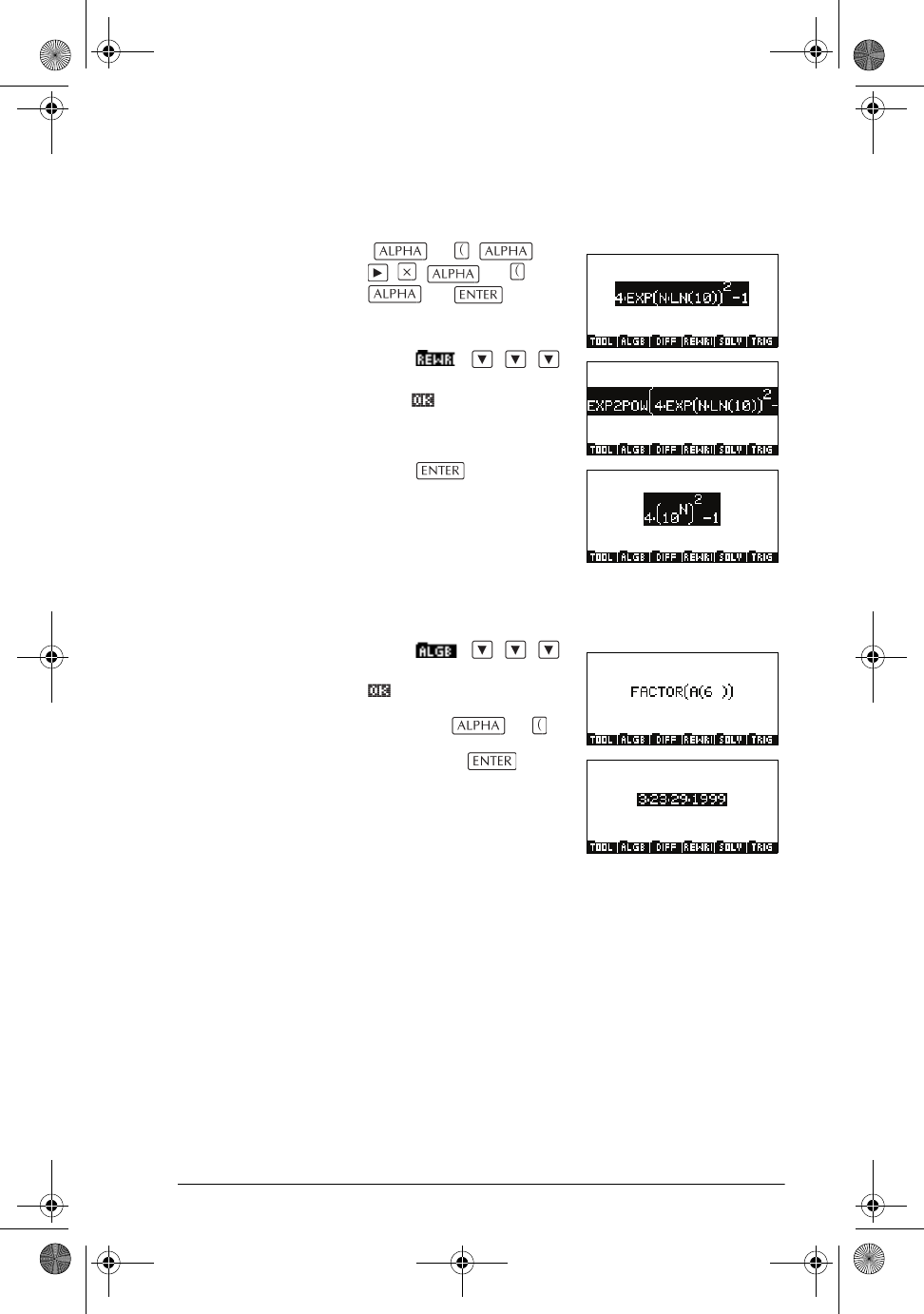
Step-by-Step Examples 16-11
Now consider the product of two of the definitions
entered above: B(N) × C(N):
B N
C
N .
Press ,
to select EXP2POW and
press .
Press to evaluate
the expression, yielding the
result of B(N) × C(N).
Consider now the decomposition of A(6) into its prime
factors.
Press ,
to select FACTOR and press
.
Now press A 6.
Finally, press to get
the result. The factors are
listed, separated by a
medial period. In this case,
the factors are 3, 23, 29
and 1999.
Now let’s consider whether b
n
and c
n
are relatively prime.
Here, the calculator is useful only for trying out different
values of n.
To show that b
n
and c
n
are relatively prime, it is enough
to note that:
That means that the common divisors of b
n
and c
n
are the
common divisors of b
n
and 2, as well as the common
divisors of c
n
and 2. b
n
and 2 are relatively prime
because b
n
is a prime number other than 2. So:
c
n
b
n
2+=
hp40g+.book Page 11 Friday, December 9, 2005 1:03 AM


















